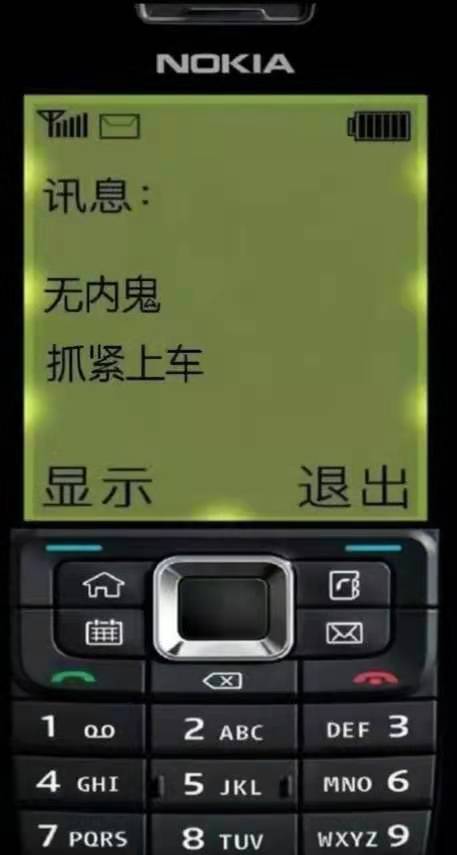這裡給大家分享我在網上總結出來的一些知識,希望對大家有所幫助 記憶體泄漏是前端開發中的一個常見問題,可能導致項目變得緩慢、不穩定甚至崩潰。在本文中,我們將深入探討在JavaScript、Vue和React項目中可能導致記憶體泄漏的情況,並提供詳細的代碼示例,以幫助開發人員更好地理解和解決這些問題。 第一 ...
這裡給大家分享我在網上總結出來的一些知識,希望對大家有所幫助
記憶體泄漏是前端開發中的一個常見問題,可能導致項目變得緩慢、不穩定甚至崩潰。在本文中,我們將深入探討在JavaScript、Vue和React項目中可能導致記憶體泄漏的情況,並提供詳細的代碼示例,以幫助開發人員更好地理解和解決這些問題。
第一部分:JavaScript中的記憶體泄漏
1. 未正確清理事件處理器
JavaScript中的事件處理器是記憶體泄漏的常見來源之一。當你向DOM元素添加事件處理器時,如果不適當地刪除這些事件處理器,它們會持有對DOM的引用,妨礙垃圾回收器釋放相關的記憶體。
// 錯誤的示例:未刪除事件處理器
const button = document.querySelector('#myButton');
button.addEventListener('click', function() {
// 一些操作
});
// 忘記刪除事件處理器
// button.removeEventListener('click', ??);
解決方法:在不再需要事件處理器時,務必使用removeEventListener來移除它們。
2. 迴圈引用
迴圈引用是另一個可能導致記憶體泄漏的情況。當兩個或多個對象相互引用時,即使你不再使用它們,它們也無法被垃圾回收。
// 錯誤的示例:迴圈引用
function createObjects() {
const obj1 = {};
const obj2 = {};
obj1.ref = obj2;
obj2.ref = obj1;
return 'Objects created';
}
createObjects();
解決方法:確保在不再需要對象時,將其引用設置為null,打破迴圈引用。
function createObjects() {
const obj1 = {};
const obj2 = {};
obj1.ref = obj2;
obj2.ref = obj1;
// 手動打破迴圈引用
obj1.ref = null;
obj2.ref = null;
return 'Objects created';
}
3. 未釋放大型數據結構
在JavaScript項目中,特別是處理大型數據集合時,未釋放這些數據結構可能導致記憶體泄漏。
// 錯誤的示例:未釋放大型數據結構
let largeData = null;
function loadLargeData() {
largeData = [...Array(1000000).keys()]; // 創建一個包含100萬項的數組
}
loadLargeData();
// 忘記將largeData設置為null
解決方法:當你不再需要大型數據結構時,將其設置為null以釋放記憶體。
function loadLargeData() {
largeData = [...Array(1000000).keys()];
// 使用largeData後
// 不再需要它
largeData = null;
}
4. 未正確清理定時器和間隔器
使用setTimeout和setInterval創建定時器和間隔器時,如果不及時清理它們,它們會持續運行,可能導致記憶體泄漏。
// 錯誤的示例:未清理定時器
let timer;
function startTimer() {
timer = setInterval(function() {
// 一些操作
}, 1000);
}
startTimer();
// 忘記清理定時器
// clearInterval(timer);
解決方法:在不再需要定時器或間隔器時,使用clearTimeout和clearInterval來清理它們。
5. 使用閉包保留對外部作用域的引用
在JavaScript中,閉包可以訪問其父作用域的變數。如果不小心,閉包可能會保留對外部作用域的引用,導致外部作用域的變數無法被垃圾回收。
// 錯誤的示例:使用閉包保留外部作用域的引用
function createClosure() {
const data = '敏感數據';
return function() {
console.log(data);
};
}
const closure = createClosure();
// closure保留了對data的引用,即使不再需要data
解決方法:在不再需要閉包時,確保解除對外部作用域的引用。
function createClosure() {
const data = '敏感數據';
return function() {
console.log(data);
};
}
let closure = createClosure();
// 在不再需要閉包時,解除引用
closure = null;
這些是JavaScript中可能導致記憶體泄漏的常見情況。現在讓我們深入瞭解Vue和React中的記憶體泄漏問題。
第二部分:Vue中的記憶體泄漏
1. 未取消事件監聽
在Vue中,當你使用$on方法添加事件監聽器時,如果在組件銷毀前未取消監聽,可能會導致記憶體泄漏。
<template>
<div>
<button @click="startListening">Start Listening</button>
</div>
</template>
<script>
export default {
methods: {
startListening() {
this.$on('custom-event', this.handleCustomEvent);
},
handleCustomEvent() {
// 處理自定義事件
},
beforeDestroy() {
// 錯誤的示例:未取消事件監聽
// this.$off('custom-event', this.handleCustomEvent);
}
}
};
</script>
在上述示例中,我們添加了一個自定義事件監聽器,但在組件銷毀前未取消監聽。
解決方法:確保在組件銷毀前使用$off來取消事件監聽。
<template>
<div>
<button @click="startListening">Start Listening</button>
</div>
</template>
<script>
export default
{
methods: {
startListening() {
this.$on('custom-event', this.handleCustomEvent);
},
handleCustomEvent() {
// 處理自定義事件
},
beforeDestroy() {
// 取消事件監聽
this.$off('custom-event', this.handleCustomEvent);
}
}
};
</script>
2. 未正確清理定時器
在Vue中,使用setInterval或setTimeout創建定時器時,需要註意清理定時器,否則它們將在組件銷毀後繼續運行。
<template>
<div>
<button @click="startTimer">Start Timer</button>
</div>
</template>
<script>
export default {
data() {
return {
message: 'Hello, Vue!'
};
},
methods: {
startTimer() {
this.timer = setInterval(() => {
// 一些操作
}, 1000);
},
beforeDestroy() {
// 錯誤的示例:未清理定時器
// clearInterval(this.timer);
}
}
};
</script>
在上述示例中,我們創建了一個定時器,但在組件銷毀前沒有清理它。
解決方法:在beforeDestroy鉤子中清理定時器。
<template>
<div>
<button @click="startTimer">Start Timer</button>
</div>
</template>
<script>
export default {
data() {
return {
message: 'Hello, Vue!'
};
},
methods: {
startTimer() {
this.timer = setInterval(() => {
// 一些操作
}, 1000);
},
beforeDestroy() {
// 清理定時器
clearInterval(this.timer);
}
}
};
</script>
3. 未銷毀Vue的子組件
在Vue中,如果子組件未正確銷毀,可能會導致記憶體泄漏。這經常發生在使用動態組件或路由時。
<template>
<div>
<button @click="toggleComponent">Toggle Component</button>
<keep-alive>
<my-component v-if="showComponent" />
</keep-alive>
</div>
</template>
<script>
import MyComponent from './MyComponent.vue';
export default {
data() {
return {
showComponent: false
};
},
components: {
MyComponent
},
methods: {
toggleComponent() {
this.showComponent = !this.showComponent;
}
}
};
</script>
在上述示例中,我們使用<keep-alive>包裹了<my-component>,以保持其狀態,但如果在組件銷毀前未將其銷毀,可能會導致記憶體泄漏。
解決方法:確保在不再需要組件時,調用$destroy方法,以手動銷毀Vue子組件。
<template>
<div>
<button @click="toggleComponent">Toggle Component</button>
<keep-alive>
<my-component v-if="showComponent" ref="myComponent" />
</keep-alive>
</div>
</template>
<script>
import MyComponent from './MyComponent.vue';
export default {
data() {
return {
showComponent: false
};
},
components: {
MyComponent
},
methods: {
toggleComponent() {
if (this.showComponent) {
// 銷毀組件
this.$refs.myComponent.$destroy();
}
this.showComponent = !this.showComponent;
}
}
};
</script>
4. 未取消非同步操作或請求
在Vue中,如果組件中存在未取消的非同步操作或HTTP請求,這些操作可能會保留對組件的引用,即使組件已銷毀,也會導致記憶體泄漏。
<template>
<div>
<p>{{ message }}</p>
</div>
</template>
<script>
export default {
data() {
return {
message: 'Hello, Vue!'
};
},
created() {
this.fetchData(); // 發起HTTP請求
},
beforeDestroy() {
// 錯誤的示例:未取消HTTP請求
// this.cancelHttpRequest();
},
methods: {
fetchData() {
this.$http.get('/api/data')
.then(response => {
this.message = response.data;
});
},
cancelHttpRequest() {
// 取消HTTP請求邏輯
}
}
};
</script>
在上述示例中,我們發起了一個HTTP請求,但在組件銷毀前未取消它。
解決方法:確保在組件銷毀前取消非同步操作、清理未完成的請求或使用適當的取消機制。
<template>
<div>
<p>{{ message }}</p>
</div>
</template>
<script>
export default {
data() {
return {
message: 'Hello, Vue!'
};
},
created() {
this.fetchData(); // 發起HTTP請求
},
beforeDestroy() {
// 取消HTTP請求
this.cancelHttpRequest();
},
methods: {
fetchData() {
this.$http.get('/api/data')
.then(response => {
this.message = response.data;
});
},
cancelHttpRequest() {
// 取消HTTP請求邏輯
// 註意:需要實現取消HTTP請求的邏輯
}
}
};
</script>
5. 長時間保持全局狀態
在Vue應用中,如果全局狀態(例如使用Vuex管理的狀態)被長時間保持,即使不再需要,也可能導致記憶體泄漏。
// 錯誤的示例:長時間保持全局狀態
const store = new Vuex.Store({
state: {
// 大型全局狀態
},
mutations: {
// 修改全局狀態
}
});
// 在整個應用生命周期中保持了store的引用
解決方法:在不再需要全局狀態時,可以銷毀它,或者在適當的時候清理它以釋放記憶體。// 正確的示例:銷毀全局狀態
const store = new Vuex.Store({
state: {
// 大型全局狀態
},
mutations: {
// 修改全局狀態
}
});
// 在不再需要全局狀態時,銷毀它
store.dispatch('logout'); // 示例:登出操作
這些是Vue中可能導致記憶體泄漏的一些情況。接下來,我們將討論React中的記憶體泄漏問題。
第三部分:React中的記憶體泄漏
1. 使用第三方庫或插件
在React項目中使用第三方庫或插件時,如果這些庫不正確地管理自己的資源或事件監聽器,可能會導致記憶體泄漏。這些庫可能會在組件被銷毀時保留對組件的引用。
import React, { Component } from 'react';
import ThirdPartyLibrary from 'third-party-library';
class MyComponent extends Component {
componentDidMount() {
this.thirdPartyInstance = new ThirdPartyLibrary();
this.thirdPartyInstance.init();
}
componentWillUnmount() {
// 錯誤的示例:未正確銷毀第三方庫的實例
// this.thirdPartyInstance.destroy();
}
render() {
return <div>My Component</div>;
}
}
在上述示例中,我們在componentDidMount中創建了一個第三方庫的實例,但在componentWillUnmount中未正確銷毀它。
解決方法:當使用第三方庫或插件時,請查看其文檔,瞭解如何正確銷毀和清理資源。確保在組件卸載時調用所需的銷毀方法。
import React, { Component } from 'react';
import ThirdPartyLibrary from 'third-party-library';
class MyComponent extends Component {
componentDidMount() {
this.thirdPartyInstance = new ThirdPartyLibrary();
this.thirdPartyInstance.init();
}
componentWillUnmount() {
// 正確的示例:銷毀第三方庫的實例
this.thirdPartyInstance.destroy();
}
render() {
return <div>My Component</div>;
}
}
2. 使用React Portals(續)
在React中,如果使用React Portals來渲染內容到其他DOM樹的部分,需要確保在組件銷毀時正確卸載Portal,以免記憶體泄漏。
import React, { Component } from 'react';
import ReactDOM from 'react-dom';
class PortalComponent extends Component {
constructor(props) {
super(props);
this.portalContainer = document.createElement('div');
}
componentDidMount() {
// 錯誤的示例:未卸載Portal
document.body.appendChild(this.portalContainer);
ReactDOM.createPortal(<div>Portal Content</div>, this.portalContainer);
}
componentWillUnmount() {
// 錯誤的示例:未卸載Portal
document.body.removeChild(this.portalContainer);
}
render() {
return null;
}
}
在上述示例中,我們創建了一個Portal,並將其附加到了DOM中,但未在組件銷毀時正確卸載它。
解決方法:確保在組件卸載前正確卸載Portal。
import React, { Component } from 'react';
import ReactDOM from 'react-dom';
class PortalComponent extends Component {
constructor(props) {
super(props);
this.portalContainer = document.createElement('div');
}
componentDidMount() {
document.body.appendChild(this.portalContainer);
}
componentWillUnmount() {
// 正確的示例:卸載Portal
document.body.removeChild(this.portalContainer);
}
render() {
// 在組件卸載後,Portal被正確卸載
return ReactDOM.createPortal(<div>Portal Content</div>, this.portalContainer);
}
}
3. 長時間保持Context
在React中,如果使用React Context來管理全局狀態,並且長時間保持了對Context的引用,可能會導致記憶體泄漏。
// 錯誤的示例:長時間保持Context引用
const MyContext = React.createContext();
function MyApp() {
const contextValue = useContext(MyContext);
// 長時間保持對Context的引用
// 導致相關組件無法被垃圾回收
}
解決方法:在不再需要Context時,確保取消對它的引用,以便相關組件可以被垃圾回收。
// 正確的示例:取消Context引用
const MyContext = React.createContext();
function MyApp() {
const contextValue = useContext(MyContext);
// 在不再需要Context時,解除引用
// contextValue = null;
}
這些是React中可能導致記憶體泄漏的一些情況。通過瞭解這些潛在問題以及如何解決它們,你可以更好地編寫穩定和高性能的React項目。
4、長時間保持未卸載的組件
在React中,如果長時間保持未卸載的組件實例,可能會導致記憶體泄漏。這通常發生在路由導航或動態組件載入的情況下。
import React, { Component } from 'react';
import { Route } from 'react-router-dom';
class App extends Component {
render() {
return (
<div>
{/* 錯誤的示例:長時間保持未卸載的組件 */}
<Route path="/page1" component={Page1} />
<Route path="/page2" component={Page2} />
</div>
);
}
}
在上述示例中,如果用戶在/page1和/page2之間切換,組件Page1和Page2的實例將一直存在,即使不再需要。
解決方法:確保在不再需要的情況下卸載組件。使用React Router等路由庫時,React會自動卸載不再匹配的組件。
import React, { Component } from 'react';
import { Route } from 'react-router-dom';
class App extends Component {
render() {
return (
<div>
{/* 正確的示例:React會自動卸載不匹配的組件 */}
<Route path="/page1" component={Page1} />
<Route path="/page2" component={Page2} />
</div>
);
}
}
5. 遺留的事件監聽器
在React中,使用類組件時,未正確清理事件監聽器可能會導致記憶體泄漏。
import React, { Component } from 'react';
class MyComponent extends Component {
componentDidMount() {
window.addEventListener('resize', this.handleResize);
}
componentWillUnmount() {
// 錯誤的示例:未移除事件監聽器
// window.removeEventListener('resize', this.handleResize);
}
handleResize() {
// 處理視窗大小調整事件
}
render() {
return <div>My Component</div>;
}
}
在上述示例中,我們添加了視窗大小調整事件的監聽器,但在組件卸載前未正確移除它。
解決方法:確保在組件卸載時移除所有事件監聽器。
import React, { Component } from 'react';
class MyComponent extends Component {
componentDidMount() {
window.addEventListener('resize', this.handleResize);
}
componentWillUnmount() {
// 正確的示例:移除事件監聽器
window.removeEventListener('resize', this.handleResize);
}
handleResize() {
// 處理視窗大小調整事件
}
render() {
return <div>My Component</div>;
}
}
總結
記憶體泄漏是前端開發中一個常見但容易忽視的問題。在JavaScript、Vue和React項目中,不正確的記憶體管理可能導致性能下降、項目不穩定甚至崩潰。為了避免記憶體泄漏,我們應謹慎處理事件處理器、定時器、迴圈引用和引用非受控組件等問題,並確保在組件銷毀前正確清理資源。使用開發者工具和性能分析工具來監測和診斷潛在的記憶體泄漏問題,以確保你的前端項目在長時間運行時表現出色。通過正確處理記憶體管理問題,你可以提高項目的性能、穩定性和用戶體驗。





